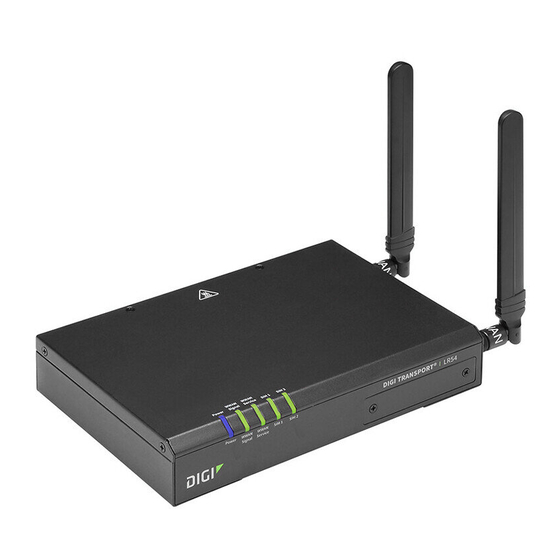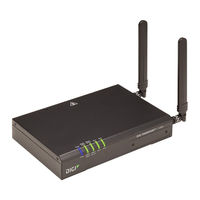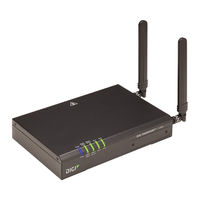
DIGI TransPort LR54 Manuals
Manuals and User Guides for DIGI TransPort LR54. We have 5 DIGI TransPort LR54 manuals available for free PDF download: User Manual, Hardware Reference Manual, Quick Start Manual
Digi TransPort LR54 User Manual (1113 pages)
Brand: Digi
|
Category: Network Router
|
Size: 17 MB
Table of Contents
-
Local Webui35
-
Learn more68
-
Interfaces69
-
Delete a LAN171
-
DHCP Servers173
-
Bridging201
-
Serial Port213
-
Wi-Fi259
-
Hotspot313
-
Hotspot Security315
-
Routing368
-
IP Routing369
-
Routing Services397
-
Dynamic DNS403
-
Vrrp410
-
Configure VRRP410
-
Configure VRRP414
-
Ipsec436
-
Ipsec Mode436
-
Ipsec Modes436
-
Authentication437
-
Openvpn493
-
Show GRE Tunnels532
-
L2Tp549
-
L2TP with Ipsec567
-
L2Tpv3 Ethernet569
-
Nemo575
-
Show NEMO Status581
-
Configure DNS614
-
Show DNS Server620
-
SNMP Security622
-
Download Mibs627
-
Modbus Gateway659
-
System Time677
-
Python Modules716
-
Local Users794
-
Ldap821
-
Packet Filtering860
-
Web Filtering888
-
Downgrading915
Advertisement
Digi TransPort LR54 User Manual (931 pages)
Brand: Digi
|
Category: Network Router
|
Size: 16 MB
Table of Contents
-
-
-
Interfaces
48-
-
Bridging165
-
-
Serial Port
174 -
Wi-Fi
192 -
Hotspot
243-
Hotspot Security245
-
-
Routing
297-
IP Routing298
-
Dynamic DNS327
-
-
-
Ipsec359
-
Ipsec Modes359
-
Authentication360
-
Openvpn407
-
Nemo460
-
-
Services
470-
Configure DNS497
-
Show DNS Server503
-
-
Modbus Gateway538
-
System Time555
-
Applications
585 -
-
Local Users653
-
Ldap677
Digi TransPort LR54 User Manual (512 pages)
WR Routers
Brand: Digi
|
Category: Network Router
|
Size: 3 MB
Table of Contents
-
-
Interfaces
21 -
-
WAN Failover57
-
Delete a WAN66
-
Ipv6
67 -
Security
73-
Local Users74
-
-
Hotspot
94 -
-
Python152
-
Port Forwarding158
-
-
Routing
174-
IP Routing175
-
Dynamic DNS180
-
-
-
System Settings
231 -
Filesystem
253-
File System253
-
Copy a File256
-
Rename a File257
-
Delete a File258
-
-
-
Logs262
-
Analyze Traffic267
-
Troubleshooting274
-
Advertisement
Digi TransPort LR54 Hardware Reference Manual (21 pages)
Brand: Digi
|
Category: Wireless Router
|
Size: 0 MB
Table of Contents
-
Sim2
DIGI TransPort LR54 Quick Start Manual (2 pages)
Brand: DIGI
|
Category: Network Router
|
Size: 0 MB
Table of Contents
Advertisement




